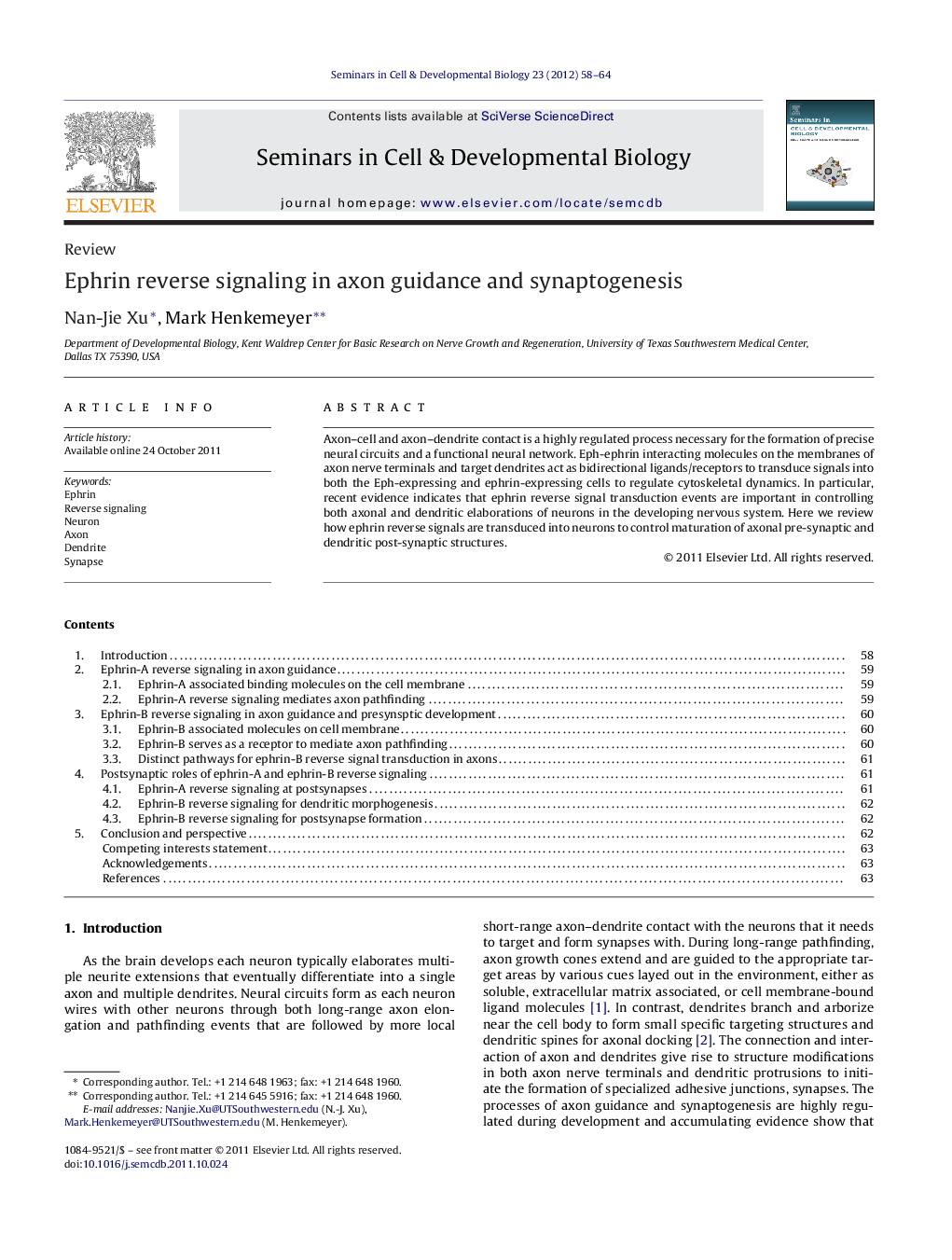| Article ID | Journal | Published Year | Pages | File Type |
|---|---|---|---|---|
| 2202768 | Seminars in Cell & Developmental Biology | 2012 | 7 Pages |
Axon–cell and axon–dendrite contact is a highly regulated process necessary for the formation of precise neural circuits and a functional neural network. Eph-ephrin interacting molecules on the membranes of axon nerve terminals and target dendrites act as bidirectional ligands/receptors to transduce signals into both the Eph-expressing and ephrin-expressing cells to regulate cytoskeletal dynamics. In particular, recent evidence indicates that ephrin reverse signal transduction events are important in controlling both axonal and dendritic elaborations of neurons in the developing nervous system. Here we review how ephrin reverse signals are transduced into neurons to control maturation of axonal pre-synaptic and dendritic post-synaptic structures.
► Ephrin-A and ephrin-B mediate reverse signals into both axons and dendrites of developing neurons. ► Ephrin-As interact with axonal membrane-located receptors to control axon behavior. ► Ephrin-Bs interact with various intercellular proteins to regulate axon guidance and presynaptic development. ► Distinct ephrin-B reverse signals are involved in dendrite branching, spine maturation and synapse formation.
